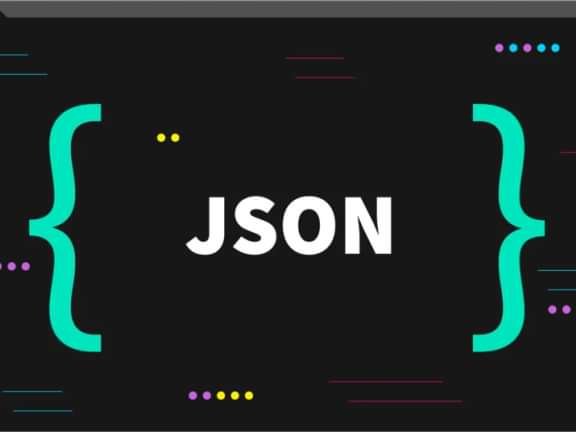Can International SEO Efforts Be Enhanced with Rapid UR Indexer?
Your international SEO strategy is only as strong as your fastest indexed page. While competitors wait weeks for Google to discover their global content, rapid URL indexing solutions can transform your international pages from invisible to ranking within days.

You've just launched your brilliant (no pun intended) website in twelve different countries, complete with perfectly localized content and cultural nuances that would make a diplomat weep with joy...
Then reality hits like a cold shower: your beautiful pages are sitting in Google's indexing queue and not going anywhere anytime soon. This leaves you wondering: can international SEO efforts be enhanced?
Well, in short, there are powerful solutions that promise to fast-track your international content into search engine databases, potentially transforming your global SEO timeline from "eventually" to "right now", like Rapid Url Indexer.
But can tools like these really enhance your international SEO efforts, or are they just more shiny objects in the overcrowded SEO toolbox?
Let's take a closer look and discover how in conjunction with conventional SEO best practices, it might just be the secret weapon your international SEO strategy has been missing.
Global SEO Transformer Tips
If you've ever launched content for international markets only to watch it sit in digital purgatory for weeks while competitors zoom past you in search rankings, you're not alone. Welcome to the wild world of global SEO, where getting your content indexed quickly can mean the difference between capturing that lucrative German market and watching your competition eat bratwurst while you're still waiting for Google to notice you exist.
Understanding Rapid URL Indexing for Global Markets
When implemented effectively, rapid URL indexing solutions enable new or updated pages to gain international visibility within days instead of the usual weeks-long process(5). So, let's start with the basics:
The mechanics behind accelerated indexing technology work quite differently from the traditional "wait and pray" approach most of us grew up with. While traditional crawling processes involve search engines leisurely strolling through the web like tourists in a museum, rapid indexing technology actively pushes your content to search engines' attention. Think of it as the difference between waiting for someone to stumble upon your lemonade stand versus hiring a guy with a megaphone to announce it.
This technology typically leverages APIs, real-time submission protocols, and intelligent crawl triggering to bypass the usual queue. Instead of your international content waiting in line behind millions of other pages, it gets the VIP treatment.
How search engines prioritize different regional content involves complex algorithms that consider everything from domain signals to user behavior patterns in specific markets. While server location was historically significant, today's search engines prioritize more sophisticated geographic indicators like country-code top-level domains (.jp, .co.uk), language targeting, and local user engagement signals.
The real challenge isn't just where your content is hosted, but how well it's localized for your target market. Your brilliant marketing campaign for the Japanese market might struggle not because it's coming from a server in Ohio, but because it lacks proper hreflang tags, Japanese language optimization, or local cultural relevance that search algorithms now detect through user behavior analysis.
Overall, cost-benefit analysis considerations become crucial when you're scaling internationally. Some experts suggest that the investment in rapid indexing technology often pays for itself within the first quarter, particularly in competitive markets where being first to index can capture significant market share.
International SEO: Breaking Down Geographic Indexing Bottlenecks
Here's where things get interesting, and by interesting, we mean potentially migraine-inducing.
Server location continues to influence indexing speed and search performance in meaningful ways. Search engines prioritize crawling content that loads quickly and reliably, which often correlates with regional hosting proximity to both users and search engine crawlers.
While CDNs (Content Delivery Networks) effectively distribute content globally and can improve page load times worldwide, they work best as a complement to, rather than replacement for, strategic server placement. The key is understanding that search engines evaluate the complete user experience—server response times, geographic relevance, and content accessibility all factor into crawl frequency and ranking decisions.
Language detection delays can slow down multilingual content recognition, particularly when you're dealing with languages that share similar character sets or when your content mixing languages like a linguistic smoothie. Search engines need time to properly categorize and understand the context, which can create indexing delays.
Mobile-first indexing creates distinct challenges across global markets. While mobile accounts for nearly 60% of global web traffic, B2B sectors still see desktop dominance, with some B2B sites reporting only 15% mobile traffic.
This means your mobile strategy for consumer-facing brands in mobile-heavy regions like Africa (69% mobile traffic) requires completely different optimization than B2B software sites targeting German enterprises, where decision-makers still prefer desktop research during business hours. Factor in China's mobile-first ecosystem built around super-apps versus the West's traditional browser-based experience, and Google's crawlers are evaluating vastly different user behaviors across markets.
Strategic Implementation of Rapid Indexing Tools
Now for the fun part: actually making this work without losing your sanity or your budget.
Selecting the right indexing solution requires evaluating three key factors: your target markets, technical infrastructure, and budget constraints.
For expansion into China, you'll need Baidu-compatible solutions like specialized crawling services, while European markets benefit from Google Search Console's international targeting features. Enterprise-level businesses often choose comprehensive platforms like BrightEdge or Conductor that offer multi-regional monitoring, whereas smaller companies typically start with Google Search Console combined with region-specific tools like Yandex Webmaster for Russia or Naver Search Advisor for South Korea.
Your choice ultimately hinges on whether you need broad coverage across multiple search engines or deep, localized optimization for specific markets.
Integration best practices for existing international SEO workflows require careful planning to avoid disrupting systems that are already working. The key is gradual implementation rather than the "rip off the band-aid" approach that tends to create more problems than it solves.
In addition, timing optimization strategies become crucial when dealing with multiple time zones and markets. There's an art to scheduling content submissions to maximize impact across different regions without overwhelming your systems or triggering spam filters.
Measuring International SEO Enhancement Results
Regional ranking improvement tracking requires specific measurement protocols that isolate indexing speed impact from other ranking factors. Set up location-specific tracking using tools like BrightLocal or SEMrush's position tracking, establishing baseline measurements before implementing indexing improvements.
Track ranking changes alongside your Google Search Console's "Coverage" and "Page Indexing" reports to correlate faster indexing with position improvements. Focus on monitoring rankings for the same keywords across different geographic markets where you've implemented indexing optimizations, comparing results against control regions where changes weren't made.
Overall, ROI calculation frameworks for international rapid indexing investments should account for market-specific variables like search volume, competition levels, and conversion rates, which can vary dramatically between regions.
Common Pitfalls and Advanced Optimization Techniques
Even experienced SEOs fall into indexing traps that can throttle their entire site's crawl budget or trigger algorithmic penalties. Here's what you should be mindful of:
Excessive indexing requests can trigger Google's crawl rate limiting mechanisms. Google Search Console data shows that sites submitting more than 10,000 URLs daily through the Indexing API may experience temporary throttling. Monitor your crawl stats and space out submission batches to avoid hitting these thresholds.
Content optimization takes priority over indexing speed. Google's helpful content guidelines explicitly state that freshness signals won't overcome quality issues. Focus on meeting search intent and E-E-A-T criteria before pursuing rapid indexing strategies. Low-quality pages may be crawled quickly but still rank poorly or face manual actions.
Regional compliance requirements vary significantly by market. GDPR (General Data Protection regulation) affects how you can track indexing performance in EU markets, while China's Cybersecurity Law restricts automated tools that could be seen as excessive server requests. Before deploying indexing automation internationally, verify it complies with local data protection laws and doesn't violate hosting providers' terms of service.
Technical implementation considerations include proper use of lastmod tags in XML sitemaps, strategic internal linking to new pages, and avoiding duplicate indexing requests across multiple tools. Configure your CMS to automatically update sitemaps when publishing new content, and use Search Console's URL inspection tool to verify indexing status before submitting batch requests.
The Final Word on Rapid URL Indexing for International SEO
So, can international SEO efforts truly be enhanced with rapid URL indexers? The short answer is a resounding "absolutely", but with some important caveats that separate the pros from the amateurs.
Think of rapid URL indexing as the express lane for your international content. While everyone else is stuck in traffic, you're zooming past with your perfectly optimized pages getting discovered faster than a viral TikTok dance. The competitive advantage is real, especially in those cutthroat international markets where being first to rank can mean the difference between success and obscurity.
However, remember that speed without strategy is just expensive chaos. The most successful international SEO campaigns combine rapid indexing with solid technical foundations, quality content, and deep market understanding. It's not about gaming the system , it's about giving your legitimately valuable content the visibility boost it deserves in competitive global markets.
Rapid URL indexers aren't magic bullets, but they're powerful tools that can significantly amplify your international SEO efforts when used strategically. If you're serious about dominating global search results, these tools deserve a spot in your digital arsenal. Just make sure you're indexing content worth discovering. After all, there's nothing worse than rapidly promoting mediocre pages to the world.
Brilliance NW is a 5 star rated and certified SEM Rush Agency partner that specializes in web development, SEO and Digital Marketing. We have bright and talented people dating back to the 90's when the internet first became a thing.
No project is too complex. We love to tackle new challenges and equally we love making our clients happy and want to believe that in one way or another we have increased the quality of their business and their professional lives.
Continue reading.
The Element API plugin is a very powerful tool that you can use for quickly exposing your data structures to an external source.
Read moreA brief introduction to consensus mechanisms and why proof of stake is the right move for Ethereum.
Read moreLet's chat about your project
Portland, OR 97215



